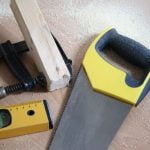Are you wondering, “How much can I get a home improvement loan for?” Home improvement loans are a valuable resource for homeowners looking to renovate or upgrade their properties. Understanding the loan amount one can qualify for is essential in planning and budgeting for home improvement projects. In this article, we will explore the concept of home improvement loans and discuss the factors that determine the loan amount one can obtain.
A home improvement loan is a type of loan specifically intended for funding home renovation or repair projects. Whether it’s remodeling your kitchen, adding a new deck, or upgrading your HVAC system, a home improvement loan can provide the necessary funds to make your property more comfortable and valuable. However, it’s crucial to have a clear understanding of how much you can borrow before getting started with your project.
In order to obtain a home improvement loan, there are various types and options available to homeowners. From personal loans to home equity loans and government-backed FHA or VA loans, each type comes with different requirements and qualifications. Additionally, lenders consider several factors when determining the loan amount, including credit score, income, and the loan-to-value ratio of the property. Understanding these factors is key to obtaining the maximum loan amount possible for your specific situation.
Understanding Home Improvement Loans
Home improvement loans are a type of loan specifically designed to fund home renovation and repair projects. Understanding the different types of home improvement loans available can help homeowners make informed decisions about which loan is best for their needs. Whether it’s a personal loan, home equity loan, or home equity line of credit (HELOC), each type comes with its own features and qualifications.
Different Types of Home Improvement Loans
Personal loans are unsecured loans, meaning they don’t require collateral, and can be used for a variety of purposes, including home improvement projects. On the other hand, home equity loans and HELOCs are secured by the borrower’s home and typically offer lower interest rates. It’s important for homeowners to consider the pros and cons of each option before making a decision.
Requirements and Qualifications
To qualify for a home improvement loan, borrowers will need to meet certain requirements set by lenders. These may include a minimum credit score, income verification, and debt-to-income ratio considerations. Additionally, the amount of equity in the home may also impact the type and amount of loan a homeowner can qualify for.
Understanding how these loans work and what is required to obtain them is key in determining which option is best suited for one’s specific situation. By being informed about the different types of loans available as well as understanding the requirements and qualifications needed to secure them, homeowners can make an educated decision on how much they can get a home improvement loan for.
Factors That Affect Loan Amount
When considering a home improvement loan, it is crucial to understand the factors that affect the loan amount you can qualify for. Lenders take into account several key factors when determining how much they are willing to lend for a home improvement project. By understanding these factors, borrowers can have a clearer idea of how much they can get a home improvement loan for.
One of the main factors that lenders consider when determining the loan amount is the borrower’s credit score. A higher credit score typically translates to a higher loan amount, as it demonstrates responsible financial behavior and the ability to repay the loan. On the other hand, a lower credit score may result in a lower loan amount or less favorable terms.
Another important factor is the borrower’s income. Lenders will assess the borrower’s income to ensure that they have the means to repay the loan. A higher income can lead to a higher loan amount, while lower income may restrict the borrowing capacity of an individual.
Additionally, lenders also look at the loan-to-value ratio, which compares the size of the loan with the value of the property being improved. The lower this ratio, the more favorable it is for borrowers in terms of securing larger loan amounts.
Understanding these key factors and working towards improving one’s credit score and income can increase the likelihood of qualifying for a larger home improvement loan. By taking steps to strengthen these areas, borrowers can improve their chances of receiving a higher loan amount from lenders and ultimately achieve their desired home improvement goals.
Maximum Loan Limits
Maximizing the potential of a home improvement loan requires understanding the maximum loan limits set by lenders and government-backed loan programs. When considering how much can I get a home improvement loan for, it’s essential to be aware of these limits to determine the scope of your renovation project and the type of loan that best suits your needs.
For government-backed loan programs like FHA and VA loans, there are specific maximum loan limits set based on the location of the property. These programs are designed to help homeowners in different income brackets access funds for home improvements.
In 2021, the maximum FHA loan limit for a single-family home in low-cost areas is $356,362, while the limit in high-cost areas is $822,375. Similarly, VA loans have varying maximum loan limits depending on the property’s location.
When working with traditional lenders or financial institutions offering home improvement loans, the maximum loan amount can also depend on factors such as credit score, income, and debt-to-income ratio. Lenders typically assess an applicant’s financial situation to determine the appropriate loan amount they qualify for. It is important to note that while some lenders might offer higher maximum loan amounts than others, they may also have stricter requirements for borrowers.
Understanding these maximum loan limits is crucial when determining how much you can get a home improvement loan for. By being informed about these limitations and carefully evaluating your financial situation, you can make an informed decision about which type of home improvement loan to pursue. Whether it’s through a government-backed program or a traditional lender, being knowledgeable about maximum loan limits will help you navigate the process more effectively.
| Loan Program | Maximum Loan Limit |
|---|---|
| FHA Loan | $356,362 – $822,375 |
| VA Loan | Varying (depending on property location) |
Lender Options
When it comes to obtaining a home improvement loan, there are various lender options to consider. Each lender may have different terms, interest rates, and maximum loan limits. It’s important to explore all your options to find the best fit for your financial needs. Here are the different lender options you may encounter when seeking a home improvement loan:
- Traditional Banks: Traditional banks often offer home improvement loans with competitive interest rates and flexible terms. They may have strict qualification requirements, but they can provide substantial loan amounts for those who qualify.
- Credit Unions: Credit unions are member-owned financial institutions that may offer more personalized service and lower fees than traditional banks. They also provide home improvement loans with favorable terms and competitive rates.
- Online Lenders: Online lenders have become increasingly popular for their convenience and quick approval process. They often cater to individuals with varying credit scores and income levels, offering flexibility in loan amounts.
- Government Programs: Certain government-backed loan programs, such as FHA (Federal Housing Administration) and VA (Veterans Affairs) loans, provide opportunities for individuals to secure home improvement loans with favorable terms and maximum loan limits set by the government.
It’s essential to research each lender option carefully before making a decision. Compare interest rates, repayment terms, and maximum loan limits to determine which lender aligns with your financial goals.
When considering how much you can get a home improvement loan for, keep in mind that different lenders may offer varying maximum loan limits based on your financial situation, creditworthiness, and the type of home improvement project you’re undertaking. By exploring diverse lender options, you can increase your chances of finding a suitable home improvement loan that meets your borrowing needs effectively.
The Application Process
When considering a home improvement loan, it’s essential to understand the application process in order to obtain the necessary funds for your project. Here are some key steps to keep in mind:
- Research and Compare: Before applying for a home improvement loan, it’s important to research and compare different lenders and loan options. Look for competitive interest rates and favorable terms that align with your financial situation.
- Gather Documentation: When applying for a home improvement loan, you will need to provide documentation such as proof of income, credit history, and details about the home improvement project. Be prepared to gather these documents ahead of time to expedite the application process.
- Complete the Application: Once you have chosen a lender and gathered all necessary documentation, it’s time to complete the loan application. Be thorough and accurate when providing information about your financial situation and the purpose of the loan.
By following these steps, you can streamline the application process for a home improvement loan and increase your chances of obtaining the necessary funds to complete your project.
Remember always to seek advice from trusted financial professionals or mortgage advisors when deciding on the best route forward for your personal circumstances. Researching thoroughly and understanding what is within reach will be imperative in ensuring all loans meet current needs.
Tips for Maximizing Loan Amount
When considering a home improvement project, one may wonder: “How much can I get a home improvement loan for?” Understanding the factors that affect the loan amount and how to maximize it is crucial in securing the necessary funds for your project. In this section, we will explore tips for maximizing the loan amount when applying for a home improvement loan.
Improve Your Credit Score
A higher credit score can often lead to a larger loan amount and lower interest rates. To improve your credit score, focus on paying off existing debt, making timely payments, and maintaining low credit card balances. It’s also important to review your credit report for any errors and work on resolving them before applying for a home improvement loan.
Increase Your Income
Lenders typically consider an applicant’s income when determining the loan amount. If you’re looking to maximize your loan amount, consider ways to increase your income, such as taking on side gigs or freelance work. Providing documentation of additional sources of income can strengthen your loan application and potentially qualify you for a larger loan amount.
Shop Around for Lender Options
Different lenders may offer varying loan amounts, interest rates, and terms. It’s essential to shop around and compare offers from multiple lenders to find the best financing option for your home improvement project. By obtaining quotes from different lenders, you can assess how much you can get a home improvement loan for and select the most favorable terms that align with your financial needs.
By implementing these tips and strategies, individuals can work towards qualifying for a larger home improvement loan amount, enabling them to fund their renovation or remodeling project effectively. When researching different lender options and understanding what factors contribute to determining the maximum loan limits, borrowers can make informed decisions about their financing options.
Conclusion
In conclusion, understanding how much you can get for a home improvement loan is essential before embarking on any home improvement project. With the different types of home improvement loans available, it’s crucial to have a clear grasp of the requirements and qualifications needed to obtain one. Factors such as credit score, income, and loan-to-value ratio play a significant role in determining the amount you can qualify for.
It’s important to note that maximum loan limits vary depending on the type of home improvement loan you are looking to secure. Government-backed loan programs like FHA and VA loans have their own set limits. Additionally, different lenders also offer varying loan amounts. Therefore, thorough research and comparison between lender options are necessary in order to find the best fit for your specific needs.
Ultimately, maximizing your loan amount involves improving your credit score and increasing your income to qualify for a larger loan amount. By understanding these factors and following the tips provided, you can ensure you’re making an informed decision before securing a home improvement loan. Remember, taking the time to research and compare different options will enable you to find the best possible solution for your home improvement projects.
Frequently Asked Questions
What Is the Typical Term for a Home Improvement Loan?
The typical term for a home improvement loan can vary depending on the lender and the specific loan product. However, it is common to see terms ranging from 2 to 12 years for these types of loans.
What Is the Minimum Credit Score for a Home Improvement Loan?
The minimum credit score required for a home improvement loan also varies depending on the lender. Generally, a FICO score of 620 or higher is considered acceptable for most home improvement loans, but some lenders may require an even higher score.
What Is the Difference Between a Home Loan and a Home Improvement Loan?
The main difference between a home loan and a home improvement loan lies in their intended use. A home loan, also known as a mortgage, is used to purchase a new home or refinance an existing one. On the other hand, a home improvement loan is specifically designed to finance renovations or repairs on a property that you already own.

I’m thrilled to have you here as a part of the Remodeling Top community. This is where my journey as an architect and remodeling enthusiast intersects with your passion for transforming houses into dream homes.





